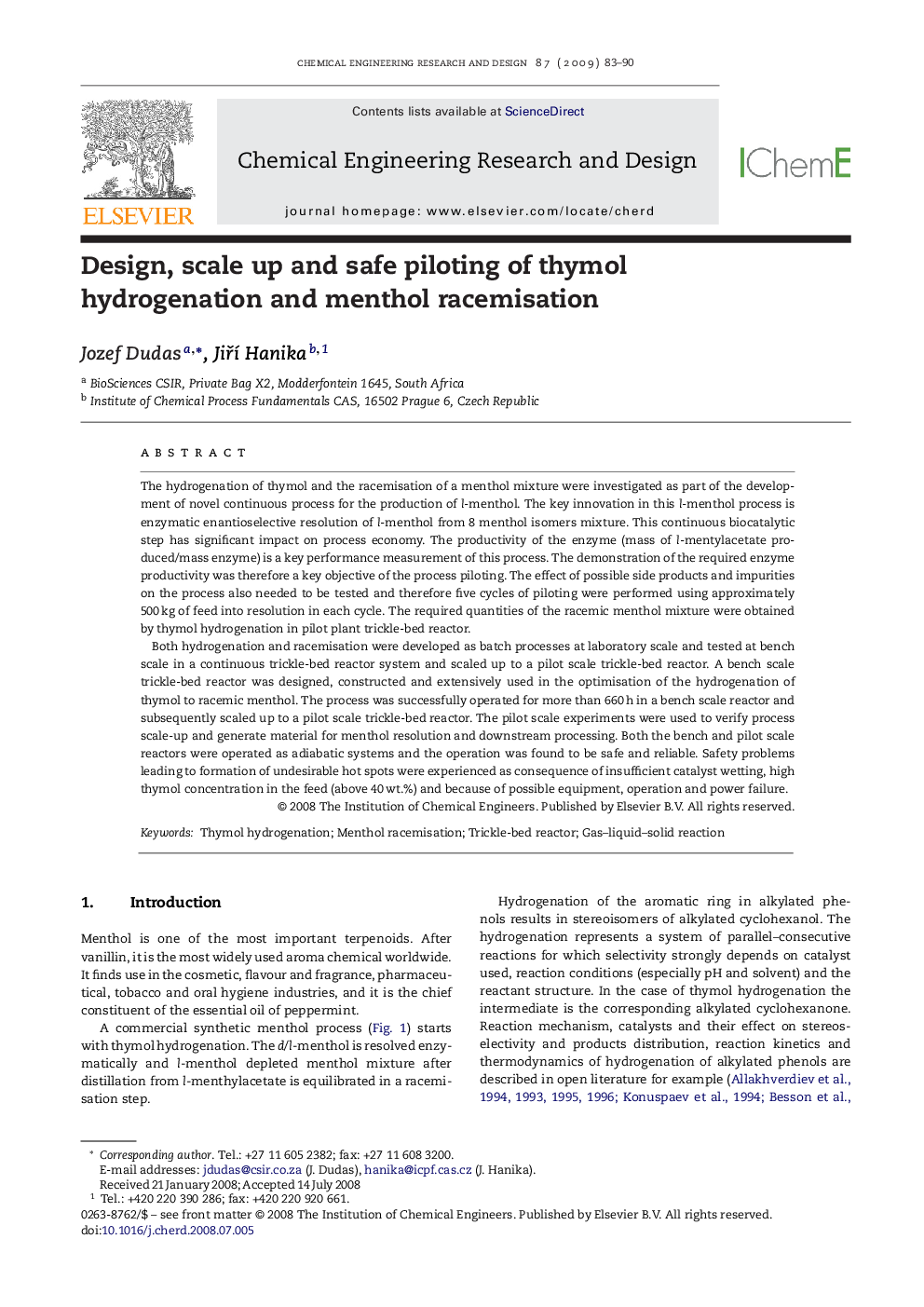| کد مقاله | کد نشریه | سال انتشار | مقاله انگلیسی | نسخه تمام متن |
|---|---|---|---|---|
| 621716 | 882572 | 2009 | 8 صفحه PDF | دانلود رایگان |

The hydrogenation of thymol and the racemisation of a menthol mixture were investigated as part of the development of novel continuous process for the production of l-menthol. The key innovation in this l-menthol process is enzymatic enantioselective resolution of l-menthol from 8 menthol isomers mixture. This continuous biocatalytic step has significant impact on process economy. The productivity of the enzyme (mass of l-mentylacetate produced/mass enzyme) is a key performance measurement of this process. The demonstration of the required enzyme productivity was therefore a key objective of the process piloting. The effect of possible side products and impurities on the process also needed to be tested and therefore five cycles of piloting were performed using approximately 500 kg of feed into resolution in each cycle. The required quantities of the racemic menthol mixture were obtained by thymol hydrogenation in pilot plant trickle-bed reactor.Both hydrogenation and racemisation were developed as batch processes at laboratory scale and tested at bench scale in a continuous trickle-bed reactor system and scaled up to a pilot scale trickle-bed reactor. A bench scale trickle-bed reactor was designed, constructed and extensively used in the optimisation of the hydrogenation of thymol to racemic menthol. The process was successfully operated for more than 660 h in a bench scale reactor and subsequently scaled up to a pilot scale trickle-bed reactor. The pilot scale experiments were used to verify process scale-up and generate material for menthol resolution and downstream processing. Both the bench and pilot scale reactors were operated as adiabatic systems and the operation was found to be safe and reliable. Safety problems leading to formation of undesirable hot spots were experienced as consequence of insufficient catalyst wetting, high thymol concentration in the feed (above 40 wt.%) and because of possible equipment, operation and power failure.
Journal: Chemical Engineering Research and Design - Volume 87, Issue 1, January 2009, Pages 83–90